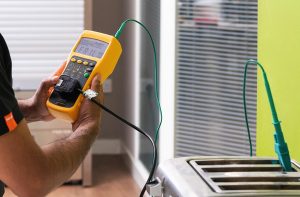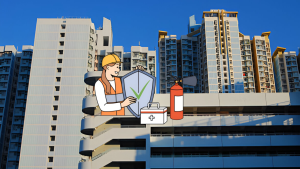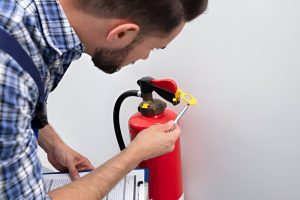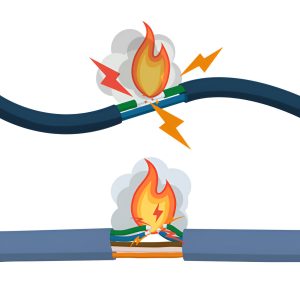As I navigate the intricate landscape of fire safety risk assessment, each step in the checklist resembles a crucial piece of a complex puzzle.
The number of steps in a fire safety risk assessment checklist may surprise you with its depth and breadth, encompassing various facets of safety protocols and preventive measures.
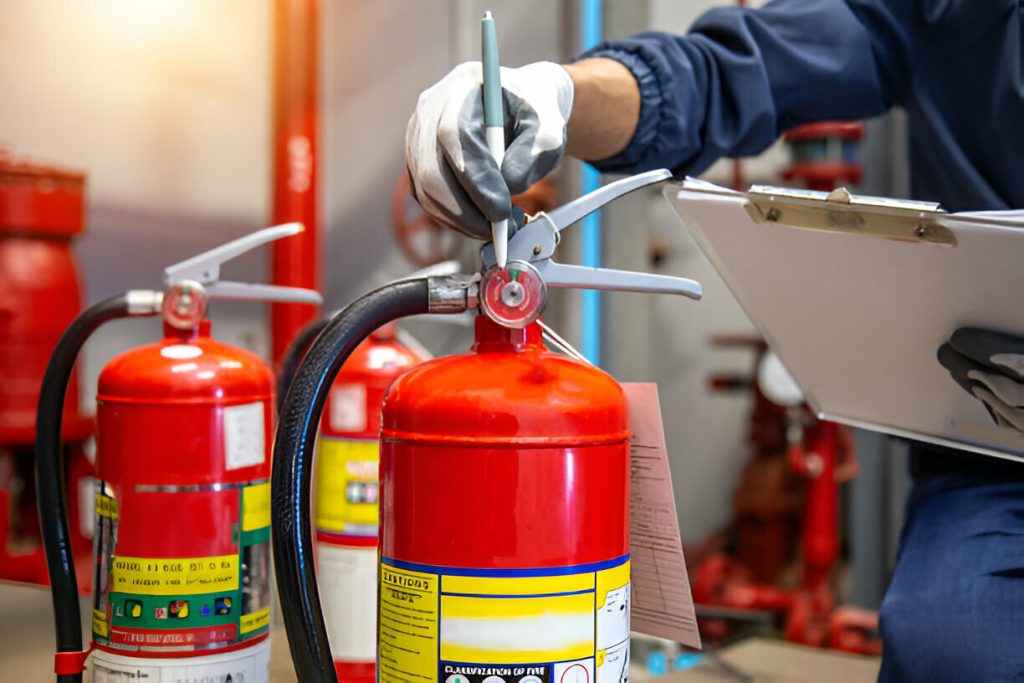
Let’s unravel the layers of this essential process together, exploring how these steps intricately weave together to ensure comprehensive protection against potential fire hazards.
Understanding Fire Risk Assessment
Understanding Fire Risk Assessment is pivotal in ensuring the safety and security of individuals and assets within a premises. It involves a comprehensive evaluation of potential risks, focusing on fire prevention, hazard identification, personnel safety, and action planning.
Risk evaluation is at the core of Fire Risk Assessment, where hazards are identified and assessed to determine the level of risk they pose. This evaluation guides the development of effective fire prevention strategies, aiming to eliminate or mitigate potential risks.
Hazard identification plays a crucial role in Fire Risk Assessment, requiring a meticulous examination of all possible sources of fires and vulnerable areas within the premises. By recognizing and addressing these hazards promptly, the likelihood of fire incidents can be significantly reduced.
Personnel safety is paramount in Fire Risk Assessment, ensuring that individuals at risk are identified and proper measures are in place to safeguard their well-being during emergencies. Action planning involves devising and implementing strategies to address potential fire hazards, secure evacuation routes, provide necessary firefighting equipment, and train personnel on proper safety protocols.
In essence, understanding Fire Risk Assessment is fundamental for creating a secure environment, effectively managing risks, and ensuring the safety of everyone within a premises.
Benefits of Fire Risk Assessment
Fire Risk Assessment provides a structured framework for identifying and mitigating potential fire hazards, ensuring the safety and security of individuals and assets within a premises. Conducting regular assessments brings numerous benefits, improving workplace safety, preventing disasters, ensuring compliance with regulations, and promoting awareness among staff.
| Benefits of Fire Risk Assessment | Description |
|---|---|
| Improving Workplace | Enhances overall safety and security measures within the work environment, fostering a culture of safety consciousness among employees. |
| Enhancing Safety | Proactively identifies and addresses fire hazards, reducing the likelihood of accidents and injuries, thus creating a safer workplace for all. |
| Preventing Disasters | By implementing preventive measures, the assessment helps in averting potential fire disasters, safeguarding lives and property. |
| Ensuring Compliance | Ensures adherence to legal requirements and industry standards, mitigating risks of penalties and legal liabilities. |
| Promoting Awareness | Increases awareness among employees about fire safety protocols, emergency procedures, and the importance of proactive risk management. |
Conducting a Fire Risk Assessment
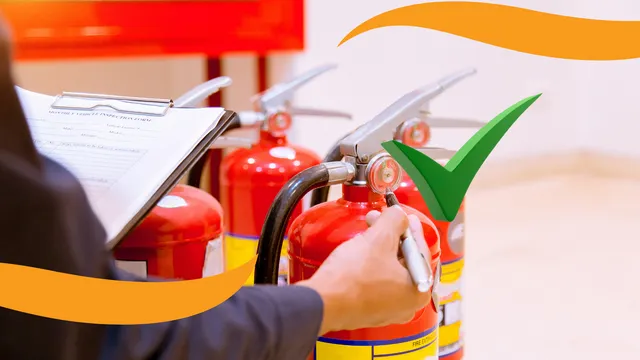
Conducting a thorough Fire Risk Assessment involves meticulous evaluation of potential fire hazards and the implementation of preventive measures to ensure the safety of individuals and assets within a premises.
The steps breakdown into risk evaluation, identification of hazards, and planning for emergencies. Common mistakes include overlooking minor hazards and neglecting regular assessments. Best practices entail following industry standards, appointing trained personnel, and updating assessment methodologies.
Adhering to industry standards is crucial for accuracy and compliance. Risk evaluation involves assessing potential fire risks, identifying at-risk individuals, and implementing fire precautions like alarms and extinguishers.
Documentation, planning, and training are essential for effective assessments, as is the regular review process to adapt to changes and improve fire safety measures.
Fire Risk Assessment Checklist Guide
To effectively manage fire safety risks, a meticulous Fire Risk Assessment Checklist Guide is essential. Risk evaluation involves assessing fire risks and potential hazards while identifying sources like heaters, electrical equipment, and flammable items. People at risk must be recognized, including employees, visitors, and individuals with specific needs, ensuring everyone knows evacuation procedures.
Action planning includes removing fire risks, implementing safety measures, providing clear exits, and training staff. The documentation process is crucial, requiring written records of assessments, fire safety plans, regular drills, and staff training. It’s vital to review the process regularly, update assessments based on changes, learn from past incidents, communicate changes to staff, and provide necessary re-training.
Strategies for Effective Assessments
Efficiency in assessments can be achieved by adopting a systematic approach that integrates thorough analysis and strategic planning. Risk evaluation is crucial in identifying potential fire hazards and assessing risks to individuals.
Hazard identification involves recognizing sources of fires and flammable items, both indoors and outdoors. Action planning includes removing and reducing fire risks, implementing fire precautions, and providing clear evacuation instructions.
Staff training is essential for ensuring everyone knows fire safety procedures and equipment maintenance. Documentation review involves keeping written records, developing fire safety plans, conducting drills, and appointing and training fire wardens.
Essential Fire Safety Equipment
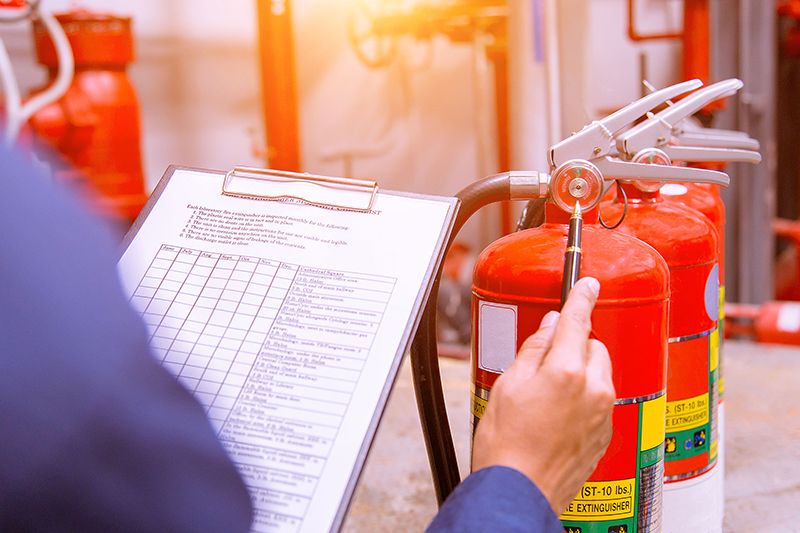
Moving forward from strategies for effective assessments, a comprehensive understanding of essential fire safety equipment is imperative for ensuring optimal protection and preparedness in the event of a fire emergency. When it comes to fire safety equipment, key elements such as fire extinguishers, emergency lighting, fire drills, and training programs play a critical role in safeguarding lives and property. Below is a breakdown of these essential components:
| Fire Safety Equipment | Description |
|---|---|
| Fire Extinguishers | Manual extinguishing devices strategically located for potential fire hazards. Regular maintenance and employee training are crucial. |
| Emergency Lighting | Illuminates escape routes during power outages. Regular testing, maintenance, and employee training on navigating using emergency lighting are essential. |
| Fire Drills | Conducted to practice emergency procedures and evacuation routes. Regular drills ensure preparedness and swift response during actual emergencies. |
| Training Programs | Provide employees with the knowledge and skills to respond effectively to fires. Regular training sessions enhance awareness and readiness for fire safety measures. |
Compliance and Fire Safety Regulations
How do fire safety regulations in England influence the compliance standards for conducting fire risk assessments efficiently and effectively? When it comes to compliance and fire safety regulations, understanding the regulatory requirements is paramount. Legal mandates dictate the necessary steps for safety compliance, risk evaluation, and emergency procedures. Adhering to these mandates ensures that fire risk assessments are conducted in alignment with the law, guaranteeing the safety of individuals and assets.
Safety compliance involves not only meeting the basic legal requirements but also going above and beyond to proactively assess and mitigate fire risks. Risk evaluation plays a crucial role in identifying potential hazards and implementing appropriate measures to address them effectively. Legal mandates provide a framework for conducting thorough assessments and developing emergency procedures that are essential for a timely and coordinated response in case of a fire emergency.
Frequently Asked Questions
What Are Some Common Challenges Faced During the Implementation of Fire Risk Assessments in Large Organizations?
Challenges in large organizations during fire risk assessment implementation include resource allocation, compliance gaps, training adequacy, communication breakdowns, monitoring effectiveness, evaluation clarity, documentation consistency, and remediation delays. Addressing these issues ensures comprehensive fire safety management.
How Can Emerging Technologies, Such as Artificial Intelligence or Iot Devices, Be Integrated Into Fire Risk Assessments for Enhanced Safety Measures?
Incorporating safety technology like AI and IoT devices enhances risk mitigation in fire assessments. Data analysis aids in smart building monitoring for proactive emergency response. Integrating these technologies ensures precision and efficiency in fire safety measures.
Are There Specific Industry-Specific Guidelines or Best Practices for Conducting Fire Risk Assessments in Sectors Like Healthcare, Manufacturing, or Hospitality?
When it comes to conducting fire risk assessments in various industries like healthcare, manufacturing, and hospitality, specific sector guidelines are crucial. Challenges include tailoring assessments, integrating technology, addressing climate impact, and considering heritage sites.
How Do External Factors Like Climate Change or Urban Development Impact the Effectiveness of Fire Risk Assessments in Different Regions?
External factors like climate change and urban development influence fire risk assessments by altering hazard exposure, emergency response dynamics, and infrastructure vulnerabilities. Climate adaptation, urban planning, risk mitigation, regional disparities, and community engagement are crucial considerations for effective assessments.
What Are the Key Considerations for Conducting Fire Risk Assessments in Historic Buildings or Heritage Sites to Ensure Both Preservation and Safety Measures Are Met?
When conducting fire risk assessments in historic buildings or heritage sites, I focus on balancing preservation challenges and safety measures. Risk assessment considers structural integrity, fire containment strategies, and preservation standards to ensure comprehensive protection.
Conclusion
In conclusion, the fire safety risk assessment checklist serves as a crucial tool in fortifying our defenses against potential fire hazards.
By meticulously evaluating risks, identifying hazards, and implementing strategic measures, we enhance our preparedness and ensure the safety of lives and properties.
Through effective assessments and adherence to regulations, we bolster our resilience in the face of fire emergencies, creating a safer environment for all.






